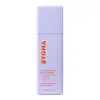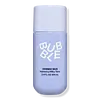What's inside
What's inside
 Key Ingredients
Key Ingredients

 Benefits
Benefits

 Concerns
Concerns

 Ingredients Side-by-side
Ingredients Side-by-side

Water
Skin ConditioningGlycerin
HumectantCaprylic/Capric Triglyceride
MaskingCetearyl Alcohol
EmollientButyrospermum Parkii Butter
Skin ConditioningCetearyl Olivate
Sorbitan Olivate
EmulsifyingDipropylene Glycol
HumectantHydroxyethyl Acrylate/Sodium Acryloyldimethyl Taurate Copolymer
Emulsion StabilisingHydroxyacetophenone
AntioxidantCeramide NP
Skin ConditioningCholesterol
EmollientPhytosphingosine
Skin ConditioningCaprylyl Glycol
EmollientBakuchiol
AntimicrobialPalmitic Acid
EmollientStearic Acid
CleansingOleic Acid
EmollientHydrogenated Lecithin
EmulsifyingAcrylates/C10-30 Alkyl Acrylate Crosspolymer
Emulsion StabilisingTromethamine
BufferingOlea Europaea Fruit Oil
MaskingEthylhexylglycerin
Skin ConditioningLactic Acid
BufferingDisodium EDTA
Sorbitan Isostearate
EmulsifyingDipotassium Glycyrrhizate
HumectantCaprylhydroxamic Acid
Tocopherol
AntioxidantWater, Glycerin, Caprylic/Capric Triglyceride, Cetearyl Alcohol, Butyrospermum Parkii Butter, Cetearyl Olivate, Sorbitan Olivate, Dipropylene Glycol, Hydroxyethyl Acrylate/Sodium Acryloyldimethyl Taurate Copolymer, Hydroxyacetophenone, Ceramide NP, Cholesterol, Phytosphingosine, Caprylyl Glycol, Bakuchiol, Palmitic Acid, Stearic Acid, Oleic Acid, Hydrogenated Lecithin, Acrylates/C10-30 Alkyl Acrylate Crosspolymer, Tromethamine, Olea Europaea Fruit Oil, Ethylhexylglycerin, Lactic Acid, Disodium EDTA, Sorbitan Isostearate, Dipotassium Glycyrrhizate, Caprylhydroxamic Acid, Tocopherol
Water
Skin ConditioningC12-15 Alkyl Benzoate
AntimicrobialCoconut Alkanes
EmollientGlycerin
HumectantPolyglyceryl-10 Mono/Dioleate
Skin ConditioningPolyglyceryl-3 Oleate
EmulsifyingPhosphatidylglycerol
Coco-Caprylate/Caprate
EmollientAnhydroxylitol
HumectantXylitol
HumectantXylitylglucoside
HumectantGlucose
HumectantEuterpe Oleracea Sterols
Skin ConditioningLinoleic Acid
CleansingLinolenic Acid
CleansingOleic Acid
EmollientSodium Hyaluronate
HumectantPhenoxyethanol
PreservativeEthylhexylglycerin
Skin ConditioningTocopheryl Acetate
AntioxidantSorbitan Isostearate
EmulsifyingXanthan Gum
EmulsifyingHydroxyethyl Acrylate/Sodium Acryloyldimethyl Taurate Copolymer
Emulsion StabilisingCetyl Hydroxyethylcellulose
Emulsion StabilisingDisodium Phosphate
BufferingHydrated Silica
AbrasiveSilica Dimethyl Silylate
EmollientSodium Phosphate
BufferingSodium Benzoate
MaskingAllantoin
Skin ConditioningArnica Montana Flower Extract
MaskingCaprylyl Glycol
EmollientPotassium Sorbate
PreservativeHexylene Glycol
EmulsifyingAcer Saccharum Sap
HumectantCitric Acid
BufferingSodium Phytate
Pentylene Glycol
Skin ConditioningSodium Acetylated Hyaluronate
HumectantSodium Hyaluronate Crosspolymer
HumectantHydrolyzed Sodium Hyaluronate
Skin ConditioningCarbomer
Emulsion StabilisingCeramide AP
Skin ConditioningCeramide EOP
Skin ConditioningCeramide NP
Skin ConditioningCholesterol
EmollientPhytosphingosine
Skin ConditioningSodium Lauroyl Lactylate
EmulsifyingWater, C12-15 Alkyl Benzoate, Coconut Alkanes, Glycerin, Polyglyceryl-10 Mono/Dioleate, Polyglyceryl-3 Oleate, Phosphatidylglycerol, Coco-Caprylate/Caprate, Anhydroxylitol, Xylitol, Xylitylglucoside, Glucose, Euterpe Oleracea Sterols, Linoleic Acid, Linolenic Acid, Oleic Acid, Sodium Hyaluronate, Phenoxyethanol, Ethylhexylglycerin, Tocopheryl Acetate, Sorbitan Isostearate, Xanthan Gum, Hydroxyethyl Acrylate/Sodium Acryloyldimethyl Taurate Copolymer, Cetyl Hydroxyethylcellulose, Disodium Phosphate, Hydrated Silica, Silica Dimethyl Silylate, Sodium Phosphate, Sodium Benzoate, Allantoin, Arnica Montana Flower Extract, Caprylyl Glycol, Potassium Sorbate, Hexylene Glycol, Acer Saccharum Sap, Citric Acid, Sodium Phytate, Pentylene Glycol, Sodium Acetylated Hyaluronate, Sodium Hyaluronate Crosspolymer, Hydrolyzed Sodium Hyaluronate, Carbomer, Ceramide AP, Ceramide EOP, Ceramide NP, Cholesterol, Phytosphingosine, Sodium Lauroyl Lactylate
 Reviews
Reviews

Ingredients Explained
These ingredients are found in both products.
Ingredients higher up in an ingredient list are typically present in a larger amount.
Caprylyl Glycol is a humectant and emollient, meaning it attracts and preserves moisture.
It is a common ingredient in many products, especially those designed to hydrate skin. The primary benefits are retaining moisture, skin softening, and promoting a healthy skin barrier.
Though Caprylyl Glycol is an alcohol derived from fatty acids, it is not the kind that can dry out skin.
This ingredient is also used as a preservative to extend the life of products. It has slight antimicrobial properties.
Learn more about Caprylyl GlycolCeramide NP is a type of ceramide and formally known as ceramide 3.
Ceramides are intercellular lipids naturally found in our skin that bonds dead skin cells together to create a barrier. They are known for their ability to hold water and thus are a great ingredient for dry skin.
Ceramides are an important building block for our skin barrier. A stronger barrier helps the skin look more firm and hydrated. By bolstering the skin ceramides act as a barrier against irritating ingredients. This can help with inflammation as well.
If you would like to eat ceramides, sweet potatoes contain a small amount.
Read more about other common types of ceramides here:
Ceramide AP
Ceramide EOP
Cholesterol is a class of organic molecules called lipids. It helps hydrate your skin and is essential to having a healthy skin barrier.
Our skin naturally contains cholesterol in the outermost layer. Besides cholesterol, it also contains ceramides and fatty acids. Cholesterol makes up about 1/4 of your skin's outer layer and barrier. Your skin barrier is responsible for keeping allergens and microbes out. Having a healthy skin barrier is also responsible for keeping your skin firm and plump.
Our bodies use cholestrol to create vitamin D, steroid hormones, and more.
Learn more about CholesterolEthylhexylglycerin (we can't pronounce this either) is commonly used as a preservative and skin softener. It is derived from glyceryl.
You might see Ethylhexylglycerin often paired with other preservatives such as phenoxyethanol. Ethylhexylglycerin has been found to increase the effectiveness of these other preservatives.
Glycerin is already naturally found in your skin. It helps moisturize and protect your skin.
A study from 2016 found glycerin to be more effective as a humectant than AHAs and hyaluronic acid.
As a humectant, it helps the skin stay hydrated by pulling moisture to your skin. The low molecular weight of glycerin allows it to pull moisture into the deeper layers of your skin.
Hydrated skin improves your skin barrier; Your skin barrier helps protect against irritants and bacteria.
Glycerin has also been found to have antimicrobial and antiviral properties. Due to these properties, glycerin is often used in wound and burn treatments.
In cosmetics, glycerin is usually derived from plants such as soybean or palm. However, it can also be sourced from animals, such as tallow or animal fat.
This ingredient is organic, colorless, odorless, and non-toxic.
Glycerin is the name for this ingredient in American English. British English uses Glycerol/Glycerine.
Learn more about GlycerinThis is a synthetic polymer. It helps improve the texture of products by adding thickness and gel-like feel.
It is also an emulsifer, meaning it prevents ingredients such as oil and water from separating. It also helps evenly disperse other ingredients.
Oleic Acid is an Omega-9 fatty acid. It can be found in many plant oils such as avocado and marula oils.
This ingredient is used to enhance the texture of products and as a cleansing agent.
Oleic Acid may not be fungal acne safe.
Learn more about Oleic AcidPhytosphingosine is a phospholipid naturally found in our skin as a building block for ceramides.. It helps moisturize, soothe, and protect skin.
Phytosphingosine contributes to your skin's natural moisturizing factor (NMF). The NMF is responsible for hydration, a strong barrier, and plasticity. Our NMF decreases with age. Increasing NMF leads to more healthy and hydrated skin.
Studies show products formulated with NMF ingredients help strengthen our skin's barrier. Having a healthy skin barrier reduces irritation and increases hydration. Our skin barrier is responsible for having plump and firm skin. It also helps protect our skin against infection, allergies, and inflammation.
Fun fact: Phytosphingosine is abundant in plants and fungi.
More ingredients that help boost collagen in skin:
Learn more about PhytosphingosineSorbitan Isostearate is an emulsifer and cleaning agent. It is created from isostearic acid and sorbitol.
As an emulsifier, Sorbitan Isostearate prevents oils and water from separating.
Due to its isostearic acid base, it may not be safe for Malassezia or fungal acne.
Learn more about Sorbitan IsostearateWater. It's the most common cosmetic ingredient of all. You'll usually see it at the top of ingredient lists, meaning that it makes up the largest part of the product.
So why is it so popular? Water most often acts as a solvent - this means that it helps dissolve other ingredients into the formulation.
You'll also recognize water as that liquid we all need to stay alive. If you see this, drink a glass of water. Stay hydrated!
Learn more about Water